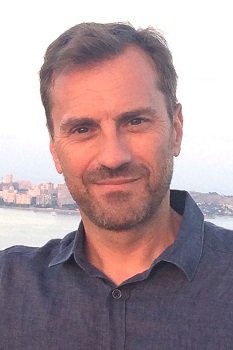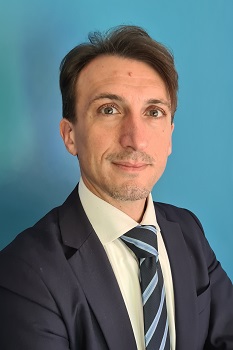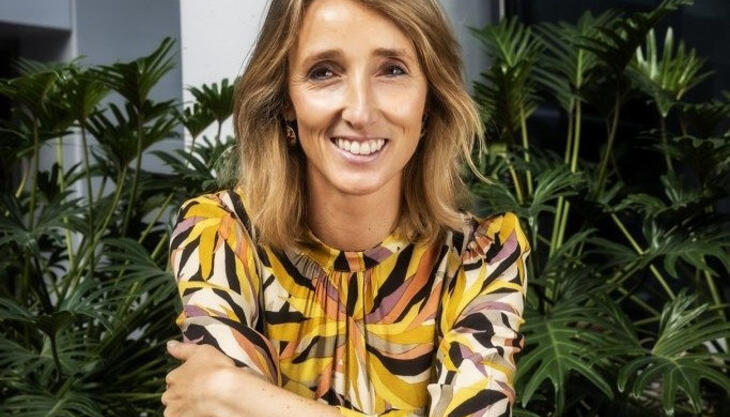Legislation, education and ecodesign: the keys to grow in the name of the circular economy

Circular economy? It’s everyone's responsibility, from the individual citizen who recycles a plastic bottle - we’re still at a 9% recycling rate worldwide - to the industrial sector. A business choice, that is not just ethical or social, but the only choice able to bring profit in the long run considering the growing sensitivity developed by the final consumer.
Whether the production is innovative packaging, lamps, food or beverages, or if it’s an automotive or logistics company, today many industrial realities around the world have already decided to embrace new paradigms, to rely on different production models and invest resources to train skills within their companies, so that production can contribute positively to the future of the entire planet, reducing the impact on future generations.
A different concept of doing business that can no longer be ignored and must be encouraged through the definition of common standards, but also of a European and local legislative support, which, combined with a greater culture and awareness, can represent a concrete accelerator of change. It's no coincidence, for example, that in those cases where the focus has been on identifying individual responsibility, plastic recycling reached 97%. Because the goal is precisely that: transforming waste and production waste from a critical issue into an economic opportunity.
That’s what emerged last March 23 from the speeches made by institutional figures from the European scene and CEOs from industrial realities during the Circular Economy Summit - Artificial Intelligence and Circular Economy models: towards a regenerative industrial ecosystem.
Organized by Business International, a division of Fiera Milano specialized in planning and implementing events and training, the Summit was an opportunity to launch the return of The Innovation Alliance, the trade fair event that - from May3 to 6, 2022 - will host four shows - Ipack-Ima, Print4All, GreenPlast, Intralogistica Italia - held together at Fiera Milano and united by a single goal: presenting to the market the best of instrumental mechanics in the logic of a supply chain, showcasing the most innovative solutions dedicated to the various industrial production sectors, and starting a shared reflection on the great challenges to which nowadays the industrial world is called to respond, from circular economy to industry 4.0.
 Scenario: a global vision is required
Scenario: a global vision is required
The speeches were inspired by the reflection on the new industrial models deriving from regenerative industrial ecosystems made by Alice Bodreau, Strategic Partners Manager of the Ellen MacArthur Foundation. According to the expert, circular economy will be key to fight climate change and achieve goals related to other global challenges, while offering new and improved opportunities for growth. Not just that: companies that are adopting circular business models can reduce their risk profile. Circular economy can, in fact, be used as a strategy to reduce risk: an analysis on 222 European companies belonging to 14 different sectors showed how the higher circularity level of a company is associated with a lower risk of debt default over a short (1 year) or medium-long (5 years) period.
 Rob Dellink, Senior Economist at OECD, presented an outlook from now up to 2060 focusing on materials and highlighting how recycling represents the future and will soon supplant mining. Therefore, circularity should not be the goal of a single country, but a common direction at a global level. For this reason, it is essential to activate international cooperation initiatives that allow the scale-up of circular activity beyond national borders, with a standardization of criteria for the use of resources, an alignment of the production framework and of the legislative system, the development of common rules and an international network of cooperation, the creation of rules encouraging the recycling of materials. Out of 50 countries that were analyzed, only 13 are incentivizing recycling activities.
Rob Dellink, Senior Economist at OECD, presented an outlook from now up to 2060 focusing on materials and highlighting how recycling represents the future and will soon supplant mining. Therefore, circularity should not be the goal of a single country, but a common direction at a global level. For this reason, it is essential to activate international cooperation initiatives that allow the scale-up of circular activity beyond national borders, with a standardization of criteria for the use of resources, an alignment of the production framework and of the legislative system, the development of common rules and an international network of cooperation, the creation of rules encouraging the recycling of materials. Out of 50 countries that were analyzed, only 13 are incentivizing recycling activities.
 This is a new approach which, as stated by William Neale, DG Environment's Directorate B-Circular Economy at the European Commission, resulted in the first European action plan of 2015, aimed at increasing recycling targets. Nowadays they are working on the second edition of this plan, which is focused on the value chain, as we need sustainable products to become the norm in Europe, not the exception, through a regulation of the minimum requirements to place a product on EU markets.
This is a new approach which, as stated by William Neale, DG Environment's Directorate B-Circular Economy at the European Commission, resulted in the first European action plan of 2015, aimed at increasing recycling targets. Nowadays they are working on the second edition of this plan, which is focused on the value chain, as we need sustainable products to become the norm in Europe, not the exception, through a regulation of the minimum requirements to place a product on EU markets.
Another key element, outlined by Neale, will be the digital product passport, which will allow all product data to be tracked, thus encouraging recycling or repair and allowing an increase of the average product life cycle. The technologies to identify and collect this data are already present and at the moment the goal is to create online links for viewing this information.
 The opportunities
The opportunities
European standards and legislation are essential, but so are the associated economic incentives to promote shared policies, foster recycling and monitor waste management. That’s where the PNRR funds are directed, as explained by Laura D'Aprile, Head of Department of Ecological Transition and Green Investment at the Italian Government's Ministry of Ecological Transition.
2.5 billion are destined to circular economy, investments that are also supported by two structural reforms: the national Strategy on circular economy and the national Plan for waste management. In Italy the main goal is to bridge the gap between northern and southern regions, particularly by encouraging proper waste management. 600 million euros are earmarked to create specific disposal hubs for different sectors: electronic waste, paper and cardboard, plastics and textiles.
It is therefore essential to define a target linked to the different regional contexts and to implement criteria and strategic guidelines for individual regions, so as to reduce the existing differences and encourage the construction of recycling plants to reach the goals at European level.
 Artificial Intelligence to accelerate development
Artificial Intelligence to accelerate development
The speech by Gianluigi Greco, Full professor of Computer Science and Engineering at the University of Calabria, President of AIxIA-Italian Association for Artificial Intelligence and member of EurAI, analyzed the interaction between circular economy and artificial intelligence, together with the role of AI as an accelerator for the realization of a new economic model.
There are three areas in which AI can give a contribution in concrete terms. The first one is Automated Design, which enables to design materials with specific characteristics, thus automating a task that is hard to carry out manually, helping for example the production of alloys and materials with low toxicity. The second area of focus is predictive maintenance, which allows to discover the residual life of a product and also to open up a possible second market. Finally, AI can play a key role in the recycling and reuse of materials: robotics or applied video surveillance can give an important contribution to the identification and separation of materials, which unfortunately in many cases is still done manually.
Speeches by CEOs: the future is already here
The second part of the Summit featured a round table discussion with CEOs from international industries representing the main production and distribution sectors, who presented the best existing solutions and best practices on a global scale: Carlotta de Bevilacqua, CEO & President, Artemide; Giulio Bonazzi, CEO, Aquafil; Christophe Rabatel, CEO, Carrefour; Simon Pietro Felice, CEO & General Director, CAVIRO Group; Sara Scrittore, Vice President and General Manager, Southern Europe Hub, Colgate-Palmolive; Nazzarena Franco, CEO, DHL; Lamberto Vallarino Gancia, CEO, Domori–Illy Group; Francesco Pintucci, CEO, Isem Group; Pierroberto Folgiero, CEO & Managing Director, Maire Tecnimont; Radek Jelinek, CEO & President, Mercedes-Benz; Valentina Pasqui, Owner & Managing Director, Pasqui Coating Converting Printing Company; Giuseppe Di Martino, CEO, Pasta Di Martino; Massimo Zonca, Board member, Poplast.

The speeches brought out the importance of three pillars that are key to developing circular economy. First of all, it’s essential to focus on legislation, both in terms of waste management and exchanging waste between countries, as well as for what concerns their international management. Then training is needed, both internal and external, because where there’s “culture” there will be a better recycling management. Finally, Ecodesign is fundamental: the sustainability of a product starts from the very moment of conception, because the design will take into account the life of the product, aiming at a longer life, a possibility of reuse, but also at using processing waste.
With a circular vision, in fact, waste materials coming from wine or chocolate become the basis for the production of energy or innovative packaging, and the surplus of food products in large-scale distribution enters parallel channels providing concrete help against food waste.
Breakthrough choices are also needed: the collaboration with competitors to work on common standards; the decision to invest in new production methods with a focus on sustainability right from the design phase, while at the same time monitoring the sustainability of the entire supply chain, including suppliers; and also the courage to overhaul one's own production facilities. These are important investments, but they will allow us to remain competitive and make a concrete contribution to “closing the loop”.
The appointment at Fiera Milano will be from May 3 to 6, 2022 with The Innovation Alliance, the exhibition that will host simultaneously Ipack-Ima, Print4All, GreenPlast and Intralogistica Italia, together with a complete offer of enabling technologies for a circular model of production and distribution.



















